Metaverse Market Size
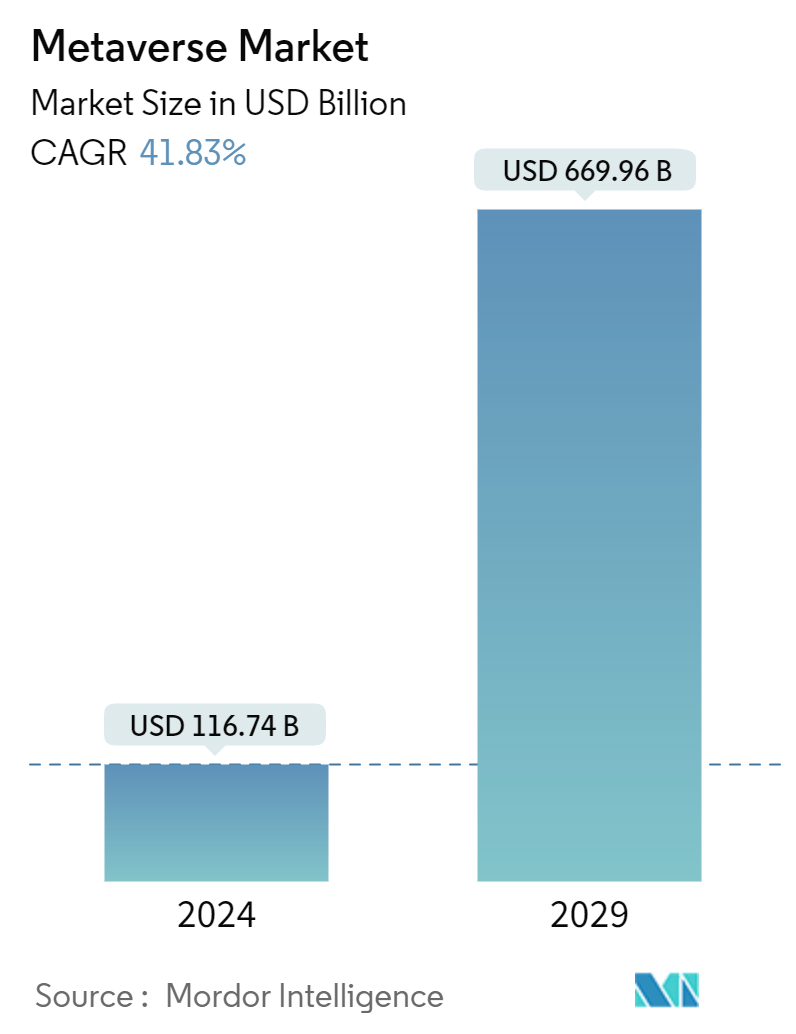
| Study Period | 2019 - 2029 |
| Market Size (2024) | USD 116.74 Billion |
| Market Size (2029) | USD 669.96 Billion |
| CAGR (2024 - 2029) | 41.83 % |
| Fastest Growing Market | Asia-Pacific |
| Largest Market | North America |
Major Players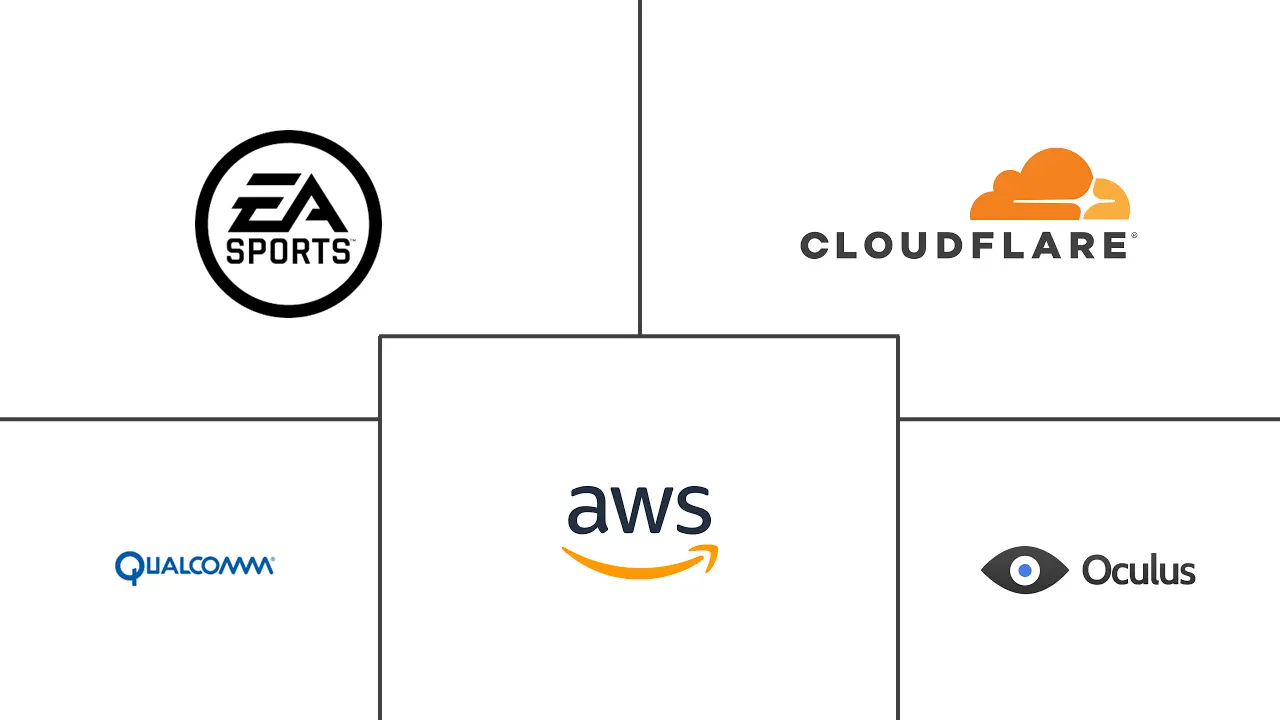
*Disclaimer: Major Players sorted in no particular order |
Metaverse Market Analysis
The Metaverse Market size is estimated at USD 116.74 billion in 2024, and is expected to reach USD 669.96 billion by 2029, growing at a CAGR of 41.83% during the forecast period (2024-2029).
The key reasons propelling the growth of the Metaverse Market globally are rising demand in the worldwide media, entertainment, and gaming industries, primarily due to the increased usage of Augmented Reality (AR), Virtual Reality (VR), and Mixed Reality (MR) technologies. The crucial justifications for adopting these technologies are that the gadgets, such as VR headsets, MR headsets, HUD, HMD, smart glasses, and intelligent helmets, can provide a first-person perspective that acts as natural user interfaces, providing 6-degree freedom, etc., to create virtual scenarios that look realistic and improve the overall gaming experience of end users.
- Small, medium-sized, and large-scale businesses and individual customers increasingly need advanced VR gadgets, promoting market expansion. Also, the rising investments in retail and e-commerce and increased use of platforms to display products in a virtual environment support industry expansion.
- Additionally, the market is growing due to the increased use of advanced technologies in various applications, including blockchain, mixed reality, and artificial intelligence (AI). The metaverse industry greatly benefits from the growing usage of new technologies, including mixed reality (MR), extended reality, artificial intelligence (AI), and blockchain. Companies, including Roblox, Facebook, Oculus, Epic Games, Microsoft, Google, USM, NVidia, etc., have already implemented or are implementing Metaverse XR/extended reality systems and other new technologies.
- Moreover, through metaverse portals, cryptocurrency is frequently used to pay for everything, from avatar shoes to NFT (Non-fungible tokens). According to a CNBC survey, one in ten people invests in cryptocurrencies, which are commonly used in trading various commodities, including NFTs. The global accessibility of cryptocurrency exchange allows investors to use this asset to offer products directly to customers on the Metaverse, thus favorably altering the market patterns.
- However, since many users are unaware of the service and security alternatives available, the expansion of the metaverse market may be constrained. Also, on the other hand, cyberattacks against key players like Tencent Holdings, Globant, and others have raised serious security and sensitivity issues.
Metaverse Market Trends
Gaming Segment Accounted for the Largest Market Share
- There has been significant growth in VR and AR gamers globally, broadening the market horizon. A provider of machine learning, artificial intelligence, big data analytics, and AR/VR solutions, NewGenApps predicts that by 2025, there will be 216 million people worldwide playing VR and AR games, with a market value of USD 11.6 billion.
- Additionally, a crucial factor that points to a promising future for VR technology in gaming is the rising comfort levels of customers in situational uses, such as VR calls and VR gaming. According to the Entertainment Software Association's statistics, around 227 million Americans play video games weekly, including two-thirds of adults and three-quarters of children under 18. The average age of video game players is 31 years, with 55% of men and 45% of women participating.
- In February 2022, Sony released the VR2 and VR2 Sense Controllers for the PlayStation 5 to provide customers with a high-quality virtual reality experience that enables users to lose themselves in the gaming world with a broad spectrum of experiences. High visual fidelity and improved trackers are added in VR2.
- The gaming world is changing at a rapid pace. A broad range of game developers worldwide is working on various futuristic game projects for select VR/AR platforms in 2024. The gaming industry is evolving quickly, and virtual reality and alternate reality gaming are no longer considered futuristic concepts. In a 2024 survey, 34 percent of game developers worldwide said they were in the process of creating games for the Meta Quest Store.
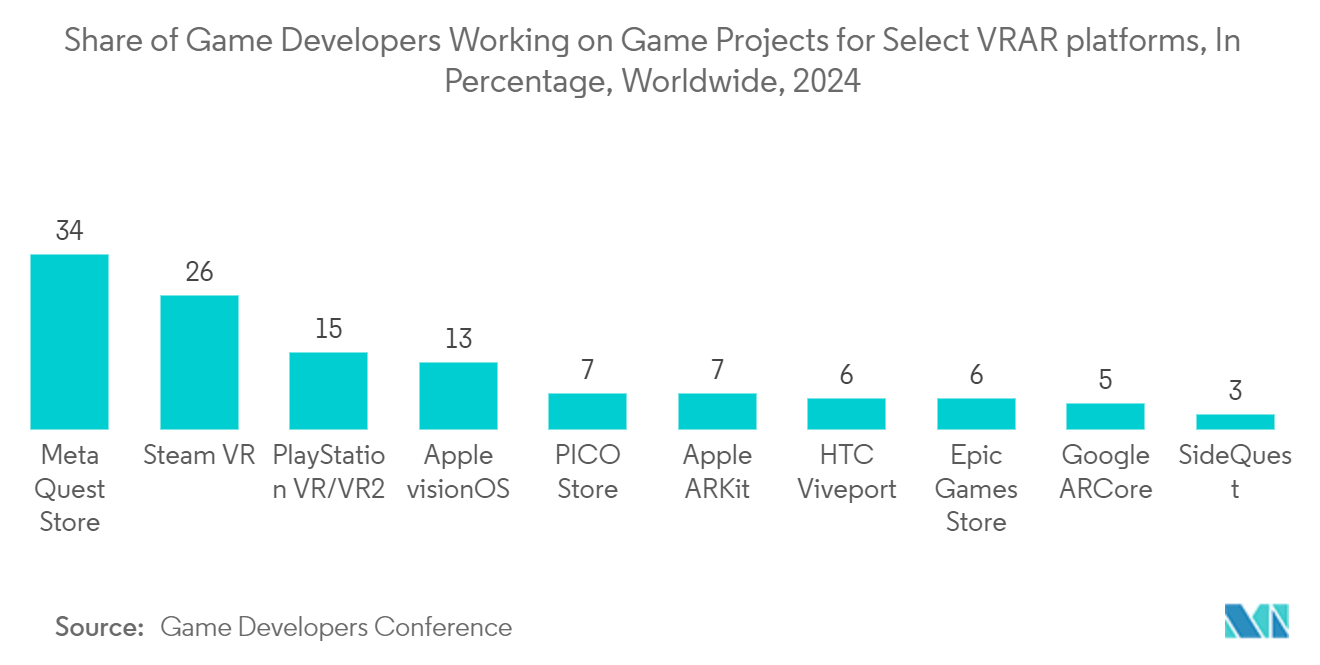
North America Holds Significant Market Share
- North America is predicted to have the most significant adoption of the metaverse solution. It is mainly because North American users and consumers adopt new and sophisticated technologies at a very rapid pace. Americans are progressively accessing and experiencing the metaverse as realistically possible through VR, MR, AR, and other new technologies. Americans also appreciate their metaverse experience, which motivates them to spend money on gadgets that would experience it even better. The rising desire for devices that improve users' experiences encourages market expansion.
- The growing investments businesses and individuals make in these advanced technologies, and digital solutions play a very significant role in the market's overall expansion. Additionally, due to its technological development and advancement, North America leads all other markets in the creation of advanced technology for use in display devices. For Instance, in November 2021, Unity Simulation Pro was introduced, which enables the developers to unleash the full potential of scalable simulations. It is the only product developed from the ground up to help with distributed rendering, enabling multiple Graphics Processing Units (GPUs) to render the same project simultaneously, either locally or in the private cloud.
- The Metaverse market in North America is expanding due to the wide application of AR technology in consumer devices. Additionally, the region has adapted metaverse technologies in healthcare, consumer products, aerospace and defense, and business applications for education and training. PTC, Magic Leap, Microsoft, and Google are just a few of the international firms in the US that offer AR devices and solutions. In addition, the main reason propelling the expansion of the metaverse market in North America has been the rising acceptance of metaverse technologies by businesses to sell their products in a modern way.
- Furthermore, in December 2021, Meta introduced a closed beta for a streamlined AR creation tool called 'Spark AR Go.' Meta declared the distribution of its 'Spark Augmented Reality (AR) Go' mobile software as a beta version for iOS and Android smartphones. Meta created the smartphone app to go along with its spark AR Studio Software Development Kit (SDK). This potent tool enables webAR effects and 3D content on its social media sites, including Facebook and Instagram. With the help of "Spark AR Go," AR content producers can create, test, and post immersive experiences on Meta's social media platforms, monitor user performance metrics and get user feedback.
- Another factor anticipated to boost the regional market's revenue growth is the rising number of start-ups concentrating on creating metaverse platforms for commercialization in the region. The region's significant concentration of gaming and metaverse companies like The Sandbox, Nvidia Corporation, and Epic Games, Inc., which primarily focus on merging metaverse into games, generate market development potential. For Instance, Nvidia Corporation declared partnerships with Blender and Adobe that will allow NVIDIA Omniverse, the first collaboration and simulation platform in the world, to reach millions more users.
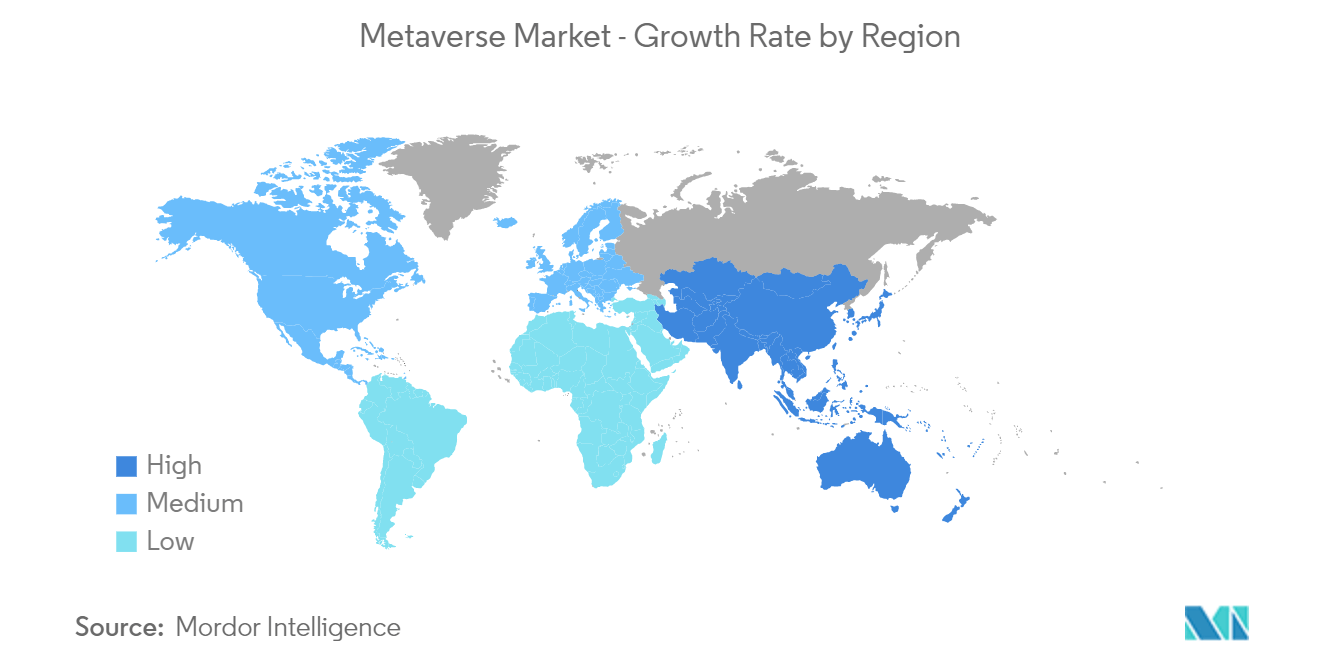
Metaverse Industry Overview
The Metaverse Market is moderately consolidated. Some of the established vendors in the market include Qualcomm Technologies Inc., AWS, and Cloudflare, among others. These companies are implementing various product development, mergers, acquisitions, strategic partnerships, etc., to launch new products to remain competitive in the market.
- February 2022 - Electronic Arts Company released GRID Legends to facilitate smooth action, organize the ideal multiplayer session, and build stories with other racers. It allows users to browse for live events that meet their preferences, enter events in real-time, open design races using the Race Creator, or create a private lobby for users' parties.
- January 2022 - Microsoft disclosed that it had acquired Activision Blizzard, Inc. Microsoft believes that this acquisition will foster the metaverse industry's development and accelerate Microsoft's gaming business growth across mobile, PC, cloud, and console platforms.
Metaverse Market Leaders
-
Electronic Arts Inc.
-
Amazon Web Services, Inc.
-
Qualcomm Technologies Inc.
-
Cloudflare, Inc.
-
Oculus
*Disclaimer: Major Players sorted in no particular order
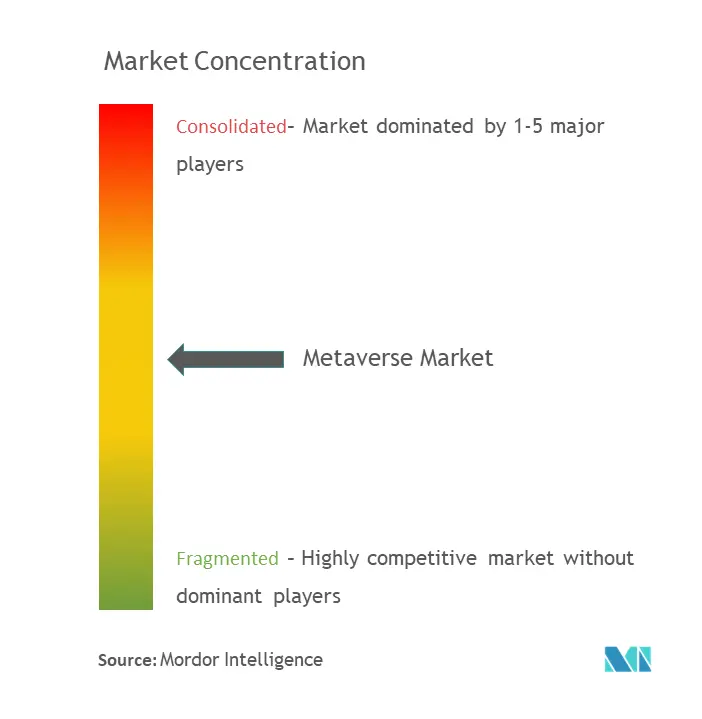
Metaverse Market News
- May 2024: Grand Cayman-based Web3 firm Mai Labs unveiled its metaverse platform, 'Mayaaverse', in India. During the launch event held in Delhi, the company also rolled out the Lumyn XR, a virtual reality headset crafted for deep immersion in the digital realm. Through these innovations, Mai Labs is making its mark in Artificial Intelligence, blockchain, and the metaverse.
- February 2024: The Royal Government of Bhutan has launched a metaverse platform named Bhutanverse. This virtual space provides a computer-generated environment, enabling global users to experience Bhutan digitally. The metaverse will showcase the country's culture, history, and philosophy, accessible from users' homes. It will feature Bhutanese motifs, art, and architecture. Additionally, a creative space has been developed to offer interactive quests, where metaverse avatars can engage in mini-games based on compelling storylines centered around Bhutan’s history and folklore.
Metaverse Market Report - Table of Contents
1. INTRODUCTION
- 1.1 Study Assumptions and Market Definition
- 1.2 Scope of the Study
2. RESEARCH METHODOLOGY
3. EXECUTIVE SUMMARY
4. MARKET INSIGHTS
- 4.1 Market Overview
- 4.2 Industry Ecosystem Analysis
-
4.3 Industry Attractiveness-Porter's Five Force Analysis
- 4.3.1 Bargaining Power of Suppliers
- 4.3.2 Bargaining Power of Consumers
- 4.3.3 Threat of New Entrants
- 4.3.4 Threat of Substitute Products
- 4.3.5 Intensity of Competitive Rivalry
- 4.4 Assessment of the Impact of COVID-19 on the Metaverse Market
5. MARKET DYNAMICS
-
5.1 Market Drivers
- 5.1.1 Favorable trends such as convergence of games and social media platforms
- 5.1.2 Technological advancements in hardware and networking
-
5.2 Market Restraints
- 5.2.1 Moderation, Privacy, accessibility & regulatory challenges
- 5.3 Analysis of key business models for Metaverse
- 5.4 Role of NFTs in furthering ownership of gaming and event-based models (Play-to-Earn & Collect)
6. MARKET SEGMENTATION
-
6.1 By Type
- 6.1.1 AR & VR Hardware
- 6.1.2 Social Media Engagement (Ads)
- 6.1.3 Virtual Live Entertainment - Epic Games and Roblox
- 6.1.4 Gaming Services
-
6.2 By End-User Industry
- 6.2.1 Gaming
- 6.2.2 Media & Entertainment
- 6.2.3 Commercial
- 6.2.4 Retail
- 6.2.5 Others
-
6.3 Geography***
- 6.3.1 North America
- 6.3.2 Europe
- 6.3.3 Asia
- 6.3.4 Australia and New Zealand
- 6.3.5 Latin America
7. COMPETITIVE LANDSCAPE
-
7.1 Company Profiles - Metaverse Experiential Solutions
- 7.1.1 Fortnite
- 7.1.2 EA Sports
- 7.1.3 Hologate
-
7.2 Company Profiles - Metaverse Infrastructure
- 7.2.1 AWS
- 7.2.2 Qualcomm
- 7.2.3 Cloudflare
-
7.3 Company Profiles - Metaverse End-user devices
- 7.3.1 Oculus
- 7.3.2 Vive
- 7.3.3 Vuzix
-
7.4 Company Profiles - Metaverse Created Economy
- 7.4.1 Epic
- 7.4.2 Roblox
- 7.4.3 Polystream
-
7.5 Company Profiles - Metaverse Discovery Platforms
- 7.5.1 Facebook
- 7.5.2 Unity
- 7.5.3 Steam
- 7.5.4 Itch.io
8. INVESTMENT ANALYSIS
9. FUTURE TRENDS
** Subject To AvailablityMetaverse Industry Segmentation
The term "metaverse" refers to a highly immersive 3D virtual world experience obtained using a combination of AR, VR, and MR technologies. By creating a virtual world where users can play immersive games, conduct business, interact socially, buy and sell virtual properties, and enjoy immersive entertainment, the metaverse platform enhances the overall internet experience.
The metaverse market is segmented by type (AR & VR hardware, social media engagement (Ads), virtual live entertainment - epic, games and roblox, gaming services), by end-user industry (gaming, media & entertainment, commercial, retail), and geography (North America, Europe, Asia Pacific, Rest of the World).
The market sizes and forecasts are provided in terms of value (USD) for all the above segments.
| By Type | AR & VR Hardware |
| Social Media Engagement (Ads) | |
| Virtual Live Entertainment - Epic Games and Roblox | |
| Gaming Services | |
| By End-User Industry | Gaming |
| Media & Entertainment | |
| Commercial | |
| Retail | |
| Others | |
| Geography*** | North America |
| Europe | |
| Asia | |
| Australia and New Zealand | |
| Latin America |
Metaverse Market Research FAQs
How big is the Metaverse Market?
The Metaverse Market size is expected to reach USD 116.74 billion in 2024 and grow at a CAGR of 41.83% to reach USD 669.96 billion by 2029.
What is the current Metaverse Market size?
In 2024, the Metaverse Market size is expected to reach USD 116.74 billion.
Who are the key players in Metaverse Market?
Electronic Arts Inc., Amazon Web Services, Inc., Qualcomm Technologies Inc., Cloudflare, Inc. and Oculus are the major companies operating in the Metaverse Market.
Which is the fastest growing region in Metaverse Market?
Asia-Pacific is estimated to grow at the highest CAGR over the forecast period (2024-2029).
Which region has the biggest share in Metaverse Market?
In 2024, the North America accounts for the largest market share in Metaverse Market.
What years does this Metaverse Market cover, and what was the market size in 2023?
In 2023, the Metaverse Market size was estimated at USD 67.91 billion. The report covers the Metaverse Market historical market size for years: 2019, 2020, 2021, 2022 and 2023. The report also forecasts the Metaverse Market size for years: 2024, 2025, 2026, 2027, 2028 and 2029.
What are the ethical considerations for businesses operating in the Metaverse?
The ethical considerations for businesses operating in the Metaverse are a) Responsible user interactions b) Data ownership c) Preventing discrimination in virtual environments
Metaverse Industry Report
The metaverse industry is booming, fueled by advancements in Augmented Reality (AR), Virtual Reality (VR), and Mixed Reality (MR) technologies, enhancing user experiences across gaming, media, and more. This growth is supported by significant investments in immersive platforms for activities ranging from virtual concerts to digital asset trading. Beyond entertainment, the metaverse is expanding into healthcare and education, driven by a demand for innovative remote interaction solutions. The Asia Pacific region is at the forefront, benefiting from a strong digital infrastructure and an eager user base. As the metaverse evolves, it promises to revolutionize connectivity, creativity, and collaboration, blurring the lines between digital and physical realms. For detailed insights, Mordor Intelligence™ offers comprehensive analysis on metaverse market share, size, and revenue growth, including forecasts and historical data, available as a free PDF download.



